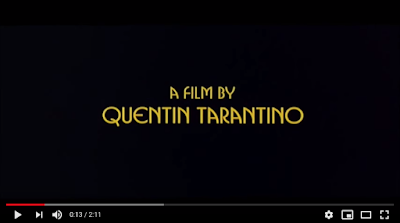-It covers social issues looking at film as an art form instead of a money making device.
-It assumes the director is THE creator of the film taking away credit to writers, producers and editors.
RICHARD CURTIS, A COUNTER EXAMPLE?
A film director, writer and producer for films who focus on the comedic relief in romcoms instead of focusing on social issues and important topics, and does the opposite by disguising those topics to the general audience. However is very successful commercially, and he has very distinct writing in a film
Is Richard Curtis an auteur, is a complicated question because he fits the description of having a distinct style with the films he makes. However he doesn't fit the point that an auteur portrays social issues and topics. The next point is that he works mainly on romcoms, which is a female based film and arguably, just like soap operas, woman's magazines are generally seen as trashy.
SHANE MEADOWS
Shane Meadows is a film director, as well as a writer and actor, and finally also a producer. He often focuses on social realist movies, working with smaller indy companies, mainly Warp Films, to create cinematography that focuses on social issues, unlike the usual romcom seen in cinemas. Shane Meadows has a very distinct style in his film making with key points such as a working class protagonist with complex motives, along with his default social realist genre.
Meadows is a classic example of an auteur director as he hits every key characteristic. Firstly all of his films make a social statement, often about the working class, juxtaposing the common stereotype of working class characters in conglomerate film media, where the character is often the dumbest character, Meadows gives the character a complex meaning (an example being Dead Man's Shoes). This is again reinforced by his choice of social realist movies. Almost all of his films have won cinematography awards as well as good reviews, because of the film being a piece of art.
Meadows is a classic example of an auteur director as he hits every key characteristic. Firstly all of his films make a social statement, often about the working class, juxtaposing the common stereotype of working class characters in conglomerate film media, where the character is often the dumbest character, Meadows gives the character a complex meaning (an example being Dead Man's Shoes). This is again reinforced by his choice of social realist movies. Almost all of his films have won cinematography awards as well as good reviews, because of the film being a piece of art.
Finally in the beginning of This is England, during the title sequence, the title 'a SHANE MEADOWS film' is shown, which is a trait-mark of an auteur director, as it gives the director credit for the film, instead of equal credit to also the writers, producers and editors
It also highlights the name, as the font is bigger, once again suggesting that this is the biggest contribute to the creation of the film
It also highlights the name, as the font is bigger, once again suggesting that this is the biggest contribute to the creation of the film
- low budget films
- talks about social issues
- complex working class protagonist characters
- clear style to his films
- not big in box office
- film in the form of art
- social realism main style
- hybrid with some films like social realist and psychological thriller
Quentin Tarantino, a classic auteur
Tarantino’s common choice of themes and his use of mis en scene show his distinctive style. In almost all of his films he writes the film, and is usually involved in the production of his films as well.
Tarantino also focuses on social issues as he often portrays the reality of social structures in his films, often having the protagonist as the underdog, and then appear strong and willing to take revenge on the antagonist of the film.
Therefore, Tarantino is a classic auteur as, similar to Meadows, he has all the characteristics of an auteur director in his films.
Following exactly the same logic as with Shane Meadows, we can denote a title that contrasts to the background as it is yellow on black,
with a directors name in a larger font, center screen
The contrast of colour suggests importance, as well as the font size difference, highlighting the name of the director. As well as this, we can connote, using the rule of thirds, that this title is of importance.
'A film by' again gives all credit to the director














